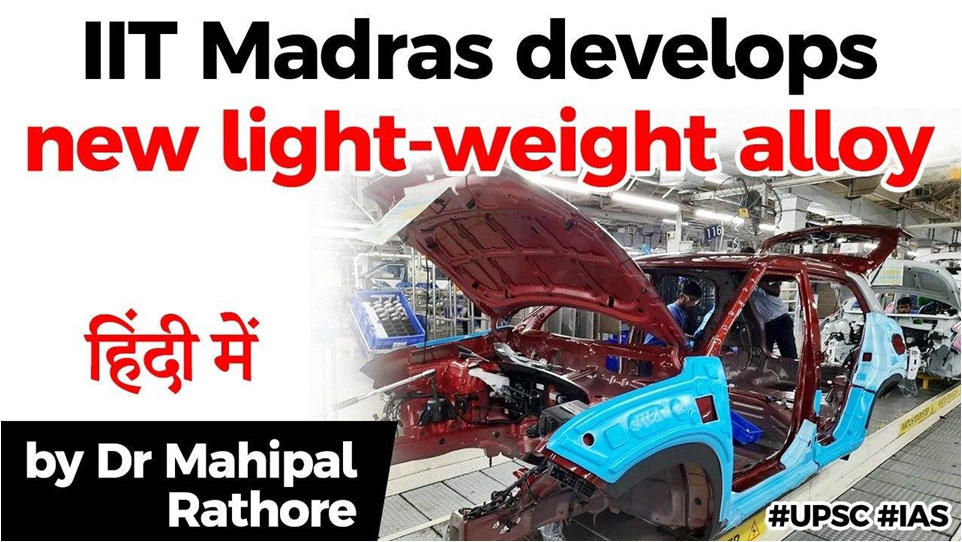Table of Contents
- Researchers from the following 3 organizations have developed an engineered magnesium alloy with significantly improved properties.
- Indian Institute of Technology Madras
- University of North Texas
- S. Army Research Laboratory
Why is Mg used less right now?
- The current industrial application of wrought magnesium alloys in structural components is very limited due to their
- Poor strength
- Poor ductility
- Yield strength asymmetry
- Lack of high strain rate super-plasticity
- *The density of Mg is 2/3rd of aluminium and 1/4th of steel.

- Ductilityis a measure of a material’s ability to undergo significant plastic deformation before rupture or breaking
- The yield strength or yield stress is a material property and is the stress corresponding to the yield point at which the material begins to deform plastically.
- The yield strength is used to determine the maximum allowable load in a mechanical component, since it represents the upper limit to forces that can be applied without producing permanent deformation.
- Prior to the yield point, a material will deform elasticallyand will return to its original shape when the applied stress is removed.
- Once the yield point is passed, some fraction of the deformation will be permanent and non-reversible and is known as plastic deformation.

The Research team’s approach
- For the research, the scientists used a magnesium alloy containing rare earth elements like
- Gadolinium (Gd)
- Yttrium (Y)
- Zirconium (Zr)
- The alloy was subjected to a thermo-mechanical processing technique (severe plastic deformation and ageing treatment) to obtain an ultrafine-grained version of this magnesium alloy.
- Thereafter, the team engineered the nano-precipitates and thermally stable ultrafine intermetallic compounds in the ultra-fine-grained magnesium alloy.
- Through this technique, the group was able to achieve the highest combination of strength-ductility and highest high strain rate superplasticity among all the existing magnesium alloys reported in the literature to date.
- The new engineered alloy is –
- Strong
- lightweight
- highly ductile
- its superplasticity is achieved at higher strain-rates
- These properties reduce overall manufacturing time, effort and costs.
Why is this development significant?
- Vehicular emissions contribute about 27% of total carbon dioxide emissions
- Countries around the world are focusing on reducing them.
- A major focus has been lowering the carbon footprint of vehicles by using light-weight material in their body.
- Light-weight vehicles take less energy (fuel) to run and are therefore one of the strategies to increase vehicle’s energy-efficiency.
- This new Magnesium alloy can replace steel and aluminium alloys in automotive and aerospace
Latest Burning Issues | Free PDF






















 WhatsApp
WhatsApp